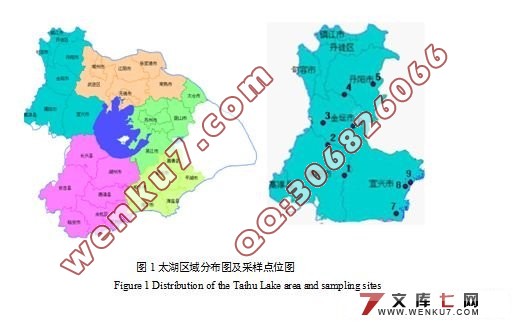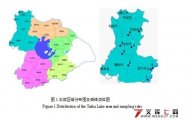太湖西部流域农田土壤氮素分布特征
来源:wenku7.com 资料编号:WK76449 资料等级:★★★★★ %E8%B5%84%E6%96%99%E7%BC%96%E5%8F%B7%EF%BC%9AWK76449
以下是资料介绍,如需要完整的请充值下载。
1.无需注册登录,支付后按照提示操作即可获取该资料.
2.资料以网页介绍的为准,下载后不会有水印.资料仅供学习参考之用. 密 保 惠 帮助
资料介绍
太湖西部流域农田土壤氮素分布特征(10000字)
摘 要:通过测量土壤中的氮含量,分析太湖西部流域氮素的分布特征,结果表明,土壤中总氮、硝态氮和铵态氮的含量呈现出梯次分布规律,表层的含量高,从表层到底层有规律的依次降低。但是硝态氮在水分充足的地段,容易发生淋溶现象,造成深层土壤中硝态氮含量超过上一层的现象,对地下水有潜在的污染威胁。而铵态氮不易发生淋溶,且含量远高于硝态氮在土层中的含量,在土层中呈现比较严格的降序分布规律,深层处的土壤铵态氮的含量相当接近,对地下水的安全威胁很小。同时,土壤中的氮素含量还与其所在的地理位置有关,越靠近太湖,氮素的含量越高,其中硝态氮的增幅十分明显,总氮的增幅较小,而铵态氮的则比较不明显。
关键词:太湖西部流域 农业面源 氮素污染 分布特征
WEST TAIHU LAKE BASIN DISTRIBUTION OF SOIL NITROGEN
Abstract: By measuring the nitrogen concentrations of soil, we analysed nitrogen-distributed feature on the west basin of Tai Lake. The results showed that the total nitrogen's concentrations of soil emerge obvious step distribution rule .The surface layer of the nitrogen concentrations is high, from surface to bottom the table shows an orderly reduction. In sufficient water-resources area, it is easy to start a leaching phenomenon, which causes the nitrogen concentrations of deep soil surpassing over the top. It has the potential to pollute the groundwater. The ammonium is not easy to cause the leaching phenomenon, and the concentrations is much higher than the nitric nitrogen in the soil layer. which presents quite strict descending distribution rule in the soil layer, The soil deep place's ammonium condition nitrogen's content is quite close , which means little threat of groundwater, At the same time, the soil nitrogen concentrations is also connected with related geographical position. The more be approaching Tai Lake, the higher the nitrogen concentrations is. The increasing range of nitric nitrogen is very obvious, compared with small range of the total nitrogen, and so as the ammonium.
Key word: West Taihu Lake Basin Agricultural non-point pollution Nitrogen pollution Distribution characteristics

目 录
摘 要 1
关键词 1
1 前言 2
2 材料与方法 3
2.1研究区概况 3
2.2 样品的采集和预处理 4
2.3 测定方法 4
2.3.1 土壤硝态氮的测定方法 4
2.3.2 土壤铵态氮的测定方法 5
2.3.3土壤总氮的测定方法 5
2.4 吸附热力学实验 6
3 结果与分析 6
3.1 总氮的分布特征 6
3.2 硝态氮的分布特征 8
3.3 铵态氮的分布特征 10
3.4 吸附热力学实验结果分析 11
4 结论 12
参考文献 12
致 谢 14
|



